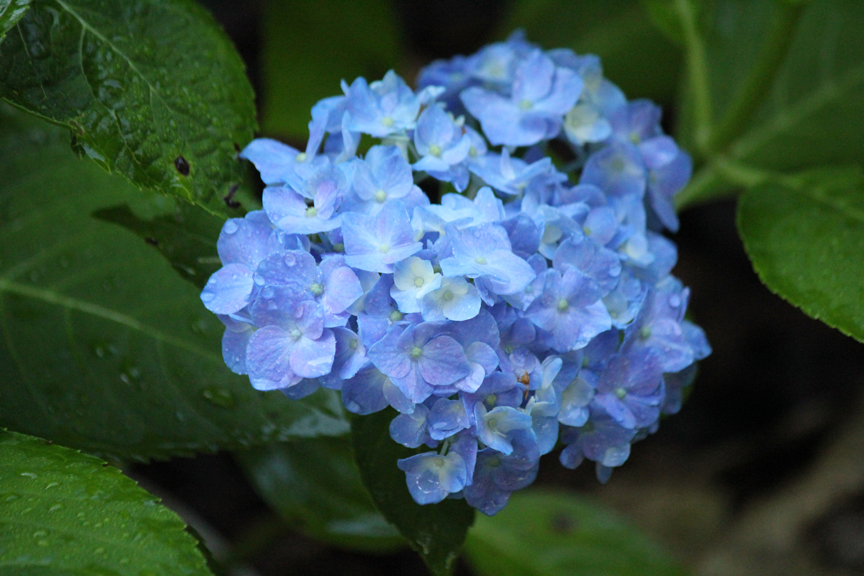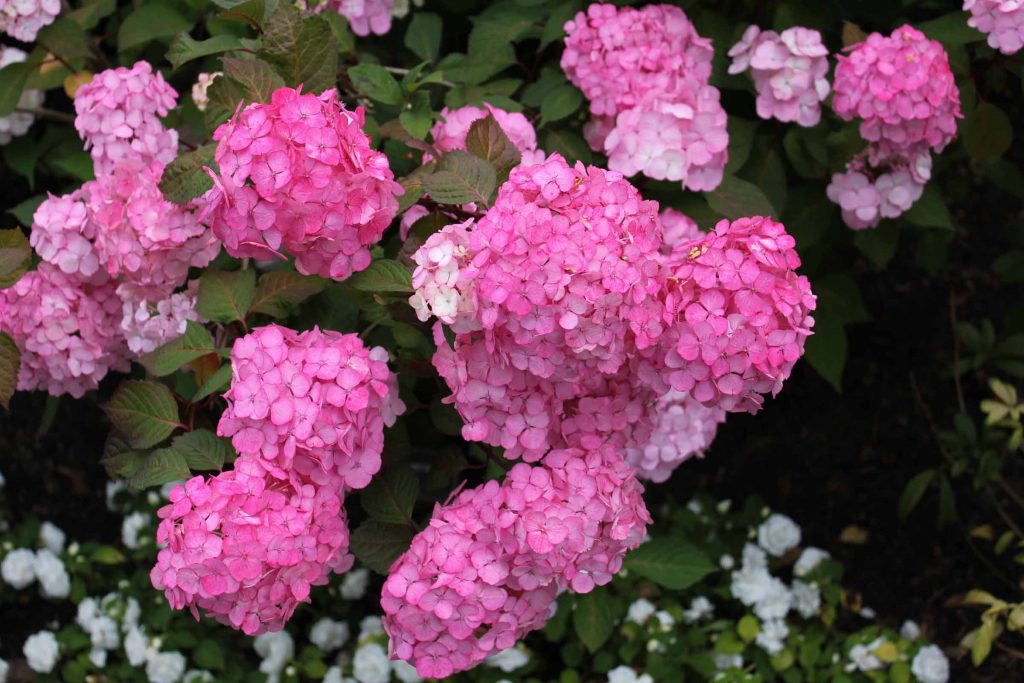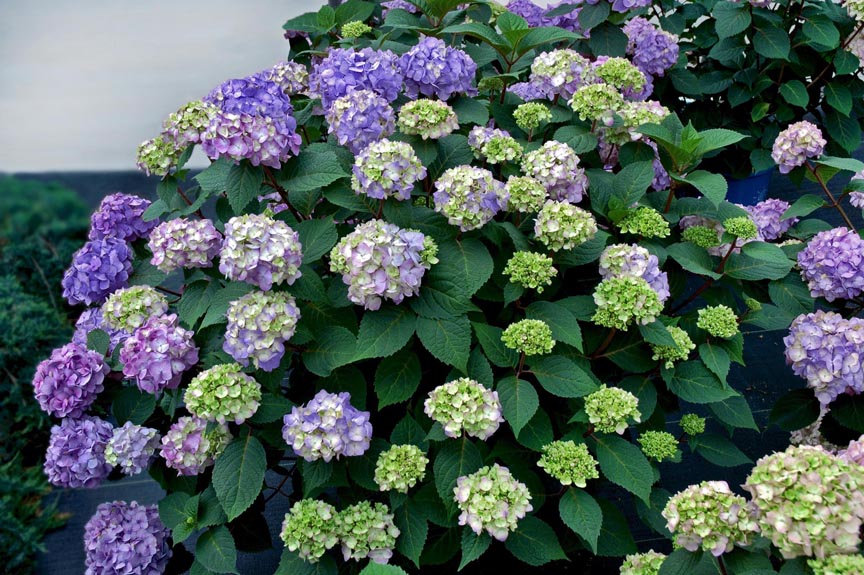Hydrangeas explained, here’s how to make them bloom
Posted on: February 14, 2019 | Written By: Doug Oster |
Hydrangea expert and author Lorraine Ballato has just spent 10 minutes telling me how difficult it is to make the plant bloom in a northern climate. Asked then why her property was filled with countless varieties of the shrub, she laughs and says, “because my heart belongs to them.”
The No. 1 garden question in many cold climates is “Why won’t my hydrangea bloom?” Ballato, the author of “Success With Hydrangeas,” has heard that query several thousand times — or more — over the course of her lifetime.
“Because you live in Pittsburgh, not Atlanta,” she remarks in regards to a lack of flowers. “It’s old man winter, they are fickle.”
It’s not all hydrangeas, she says, but the culprit is the most popular variety. Hydrangea macrophylla is commonly called the mophead type, and their flowers are what most gardeners long for.

It’s these beautiful blue hydrangea flowers that gardeners long for, says Lorraine Ballato. Photos by Lorraine Ballato.

Lorraine Ballato is the author of Success With Hydrangeas.
“People lust after those big blue flowers that we go gaga about and people don’t get them, especially in the Northeast.”
It’s certainly not impossible to see those blooms, as many gardeners see them annually on mature plants. For those of us that aren’t that lucky, Ballato says protecting the plant can keep the buds from freezing. “Protection can take many forms,” she says. “Moving existing plants near the house, a shed, fence, windbreak or a plant with persistent winter foliage will help. For plants that can’t be moved, they can be surrounded with a cage filled with shredded leaves during the winter, even bubble wrap can work.
“You try to make it believe it lives in a warmer zone,” Ballato says. “You insulate it. You have to be very careful when you remove that insulation, when all danger of frost has passed.
“I have too many, I don’t do this,” she adds with a laugh.
The thing is, H. macrophylla blooms on what’s called old wood. After the plant is done flowering, it puts on buds that sit and wait all winter to bloom the next summer. If they freeze out, then there are no blooms.
Another problem can be improper pruning. If the plant is cut back when the buds are forming, then the flowers are lost for the season.
There are other varieties of hydrangeas that are tougher, produce flowers on new growth and even some that bloom first on the old wood and then can rebloom on new wood.

‘Preziosa’ is one of Lorraine Ballato’s favorite hydrangeas.
H. Serrata, called the mountain hydrangea, is one of the tough ones.
“It is better in the colder climates because of its ability to withstand the challenges of winter. It comes out of the mountains of Japan,” she says. “It’s being used in breeding programs because of that capability.” ‘Preziosa’ is one of her favorites because the flower changes color as it matures, going from pale light pink with a dark pink edge to a wine color.
H. arborescens or smooth hydrangea blooms on new wood and is foolproof. ‘Annabelle’ is an old-time favorite with white flowers, and the Invincibelle series offers reliability with red, pink and green hues.
“The climbing hydrangea (H. petiolaris) is another magnificent plant,” Ballato says. “It’s fragrant like you can’t believe.”
It’s the perfect plant to grow vertically in a semi-shady location. Most hydrangeas prefer morning sun and afternoon shade. ‘Firefly’ and ‘Miranda’ have gold and green variegated foliage on their trailing vines.
Rebloomers like ‘Bloomstruck’ and ‘LA Dreamin’ are more reliable at flowering on their new wood for a second set of flowers than earlier introductions, she adds.
H. Paniculata blooms easily on new wood.
H. quercifola, or oak leaf hydrangea, is also a good bloomer. Many have conical white flowers that fade to deep pink, exfoliating bark the color of cinnamon and great deep red fall foliage.

Endless Summer ‘Bloomstruck’ is a great rebloomer.
Fertilizing will help, too. She recommends a rose fertilizer like Rosetone, as well as compost and even shredded leaves as a mulch that will rot down and release nutrients.
“As soon as the leaves start to come out is the first time you are going to fertilizer,” she instructs. “The second time is going to be when you see buds on the plant. If it’s a rebloomer, then you’re going to give it a third round of fertilizer.”
She likes organic fertilizers as they allow the plant to take up what it needs when it needs it as opposed to a sudden chemical jolt.
Watering is also a critical part of assuring good blooms.
“Too much water will have the plant make lots of leaves and no flowers,” Ballato says. “If the plant looks to be wilting, give it time. Once the sun is off the plant, if it rebounds, it should be fine. If not, it needs water.
“Put the hose at the base of the plant and let it run for a while,” she adds. Hydrangeas are susceptible to fungal issues, so try to keep the leaves dry.
“It’s a persnickety plant, it’s not like a rose or a forsythia,” Ballato says. “Everybody loves them; it’s that big blue flower that breaks everybody’s heart. I think it’s because it’s so elusive, that’s why people really want it, because they can’t get it.”
She says though, with the right care and choices, gardeners can get what they want.
“If you don’t want to play with them, don’t get them,” she says of H. macrophylla. “The carefree ones are the ones that bloom on new wood, they are foolproof. You just can’t get them in the blue color.”
Doug Oster is editor of Everybody Gardens, a website operated by 535Media, LLC. Reach him at 412-965-3278 or doster@535mediallc.com. See other stories, videos, blogs, tips and more at everybodygardens.com.
To purchase a signed copy of Ballato’s “Success With Hydrangeas,” learn more about hydrangeas and see her hydrangea blog go to lorraineballato.com.
More from Everybody Gardens
Plant with winter interest at Chatham University Arboretum.